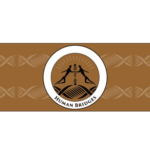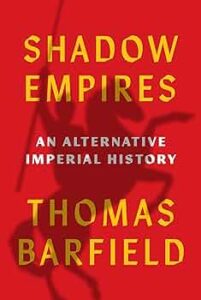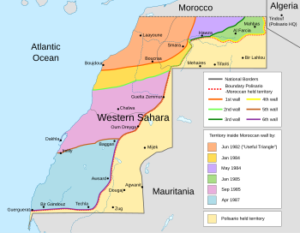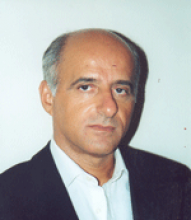A Historical Case For Why The EU Could Endure For More Than 1,000 Years
 06-18-2024 ~ Empires historically possessed a unique ability to organize diversity and successfully rule over people quite different from one another. The national states that succeeded them in Europe were organized on the basis of nationality (real or imagined) where diversity in language, ethnicity, or religion was deemed a barrier to national unity. The negative consequences of celebrating unique national identities became clear after virulent nationalism led to the rise of Nazi Germany and World War II left Europe in ruins.
06-18-2024 ~ Empires historically possessed a unique ability to organize diversity and successfully rule over people quite different from one another. The national states that succeeded them in Europe were organized on the basis of nationality (real or imagined) where diversity in language, ethnicity, or religion was deemed a barrier to national unity. The negative consequences of celebrating unique national identities became clear after virulent nationalism led to the rise of Nazi Germany and World War II left Europe in ruins.
The European Union seeks to prevent this from happening again by restoring the cosmopolitanism, size, and economic clout of a multinational empire but without creating a unitary state in the process.
The EU is designed as a supranational polity where member states retain their national sovereignty and parochial identities but agree to be bound by its laws. They maintain their own armies, independent foreign policies, national parliaments and are free to leave if they so choose. The creation of such a chimeric political beast might appear unpreceded but it is not. The Holy Roman Empire successfully managed the affairs of central Europe by creating a similar composite political structure beginning in 962 under Otto I. In a bid to create unity in the German lands, where the Romans never ruled, the Holy Roman Empire proclaimed itself the successor to the long-dead Roman Empire as the defender of a Catholic Christian Europe. Lacking a single capital and imperial army, it did not seem to be much of an empire. However, its court system resolved disputes between member states, protecting the empire’s free cities and smaller estates (300+) against the more powerful ones. More unusually, it allowed individuals to seek redressals against local rulers who had violated their rights. Its Reichstag or Diet(legislature) met regularly to pass laws that were binding on all members and its emperorship was an elective position. That emperor’s power was limited because the estates within the empire remained responsible for governing their own territories. They were free to make alliances with outside powers as long as they were not detrimental to the empire or posed a danger to public peace.
That the Holy Roman Empire survived for 900 years suggests that it was on to something, and that the EU can be viewed as a secular reincarnation of it—minus only an emperor’s crown and Christian faith as symbols of its unity. However, other than making Charlemagne a symbol of European unity, it is a legacy that is largely unacknowledged and perhaps for good reason. Both the largely forgotten and derided Holy Roman Empire and the EU faced similar structural complexities and solved them in similar ways but the EU’s project was far more substantial—creating a polity that is now the world’s third-largest economy with a population of around 450 million people divided among 27 sovereign nations, which are spread across more than 4.2 million square kilometers.
Map of Post-Brexit European Union
The EU emerged as a post-World War II aspirational project designed to avoid the conflicts that had devastated the continent for centuries, first by integrating Western Europe into a single market and then creating a common political structure to administer it without eliminating the nationally sovereign governments of its member states. It then expanded into Central and Eastern Europe after the dissolution of the Soviet Union in 1991. Intellectually, the EU rooted itself in the idea that there was a common European culture that transcended the continent’s many different languages, national divisions, and religions. It would be a union with a formidable regulatory bureaucracy and court system but one without a military or single capital. Imaginary European-style buildings and bridges illustrated its euro banknotes to avoid having to choose among real ones.
Because a problem solved is a problem soon forgotten, it is barely remembered that the initial rationale for the nascent union was to end a Franco-German hostility that had led to three consecutive conflicts in 70 years: the Franco-Prussian War (1870-1871), World War I (1914-1918), and World War II (1939-1945). This union began with the integration of coal and steel industries in 1951 and took political shape in 1957 when the Treaty of Rome created a European Economic Community that was more formally merged in 1965. Its six founding members (Belgium, France, Luxembourg, Italy, the Netherlands, and West Germany) occupied the same territories as Charlemagne’s Carolingian Empire had during the 8th and 9th centuries, the only previous time that the German and French worlds shared a single governing institution with common cultural aspirations.
The new entity had no single capital but instead split its institutions among the cities of Brussels, Strasbourg, and Luxembourg. They were all nondescript places located in borderlands that the French and Germans had long fought over and lacked any taint of invidious past glory that characterized Paris, Rome, or a then-divided Berlin. By the 1970s, both Germany and France had so thoroughly embraced the integration of the community’s economies that any notion that it was designed to reduce hostility between them was relegated to a historical footnote. Their common vision now was to expand into other parts of Europe and create a peer European entity that could compete more equally with the U.S. and the Soviet Union, something no European state could hope to achieve alone.
Enlargement began with the addition of Great Britain, Ireland, and Denmark (1973), Greece (1981), and then Spain and Portugal (1986). In 1993, it was reorganized into the European Union before adding Sweden, Finland, and Austria in 1995. The withdrawal of Soviet troops from central Europe allowed Germany to reunite in 1990 and the collapse of the Soviet Union itself led to a further wave of new members in 2004: Estonia, Latvia, Lithuania, Poland, the Czech Republic, Cyprus, Malta, Slovakia, Hungary, and Slovenia. These were followed by Romania and Bulgaria in 2007, and Croatia in 2013. (Great Britain, after an unexpected negative referendum vote in 2016, left the EU in 2020.) But the successful establishment of the EU also depended on a fortuitous alignment in world politics. The U.S., following its maritime empire alliance template, was supportive of the European unity and the creation of a new economic bloc as big as its own. It not only did not hinder its emergence but the U.S. also provided the EU with a security framework through the NATO military alliance that left it free to focus entirely on its economic affairs. The Soviet Union, by contrast, had ensured that not even a modicum of economic or political autonomy would emerge in the areas it occupied—the default position historically when large states were in a position to dominate smaller ones.
In his excoriating 1667 book, De Statu Imperii Germanici, which saw more than 100,000 copies printed, Samuel Pufendorf had declared the Holy Roman (or German) Empire a “misshaped monster” because it lacked sovereignty over its component states. It also lacked a capital city and an army that emerging national states (and all other types of empires) deemed foundational. It turns out that this structure, so ill-adapted to a world of emerging nation-states that drove it to extinction, was perfectly designed for a union of sovereign states that governed as a supranational polity largely through administrative regulation and a rules-enforcing judicial system. The EU had its own revenue stream that included customs receipts, required member contributions, and a percentage of nationally assessed value-added taxes. The EU Parliament resembled the representative Diets of the Holy Roman Empire in their multiple meeting places and the disconnection between that body and a weak executive. While the Holy Roman Emperor was faulted for his inability to command the obedience of member states, the EU refused even to create a single chief executive officer. Instead, it had three separate presidencies whose priority depended on the issues involved: a rotating council of ministers’ presidency filled by a different member country every six months, a president of the European Commission, and a president of the EU Parliament.
A similarly decentralized Holy Roman Empire lasted close to a millennium in the German world and northern Italy but stood in sharp contrast to the centralized systems of government that developed in countries such as France or Britain where the state’s chief executive was the most important player. One reason for the lack of focus on an executive office in the EU was that it had no military forces to command. Defense responsibilities rested with national states themselves and with NATO on a Europe-wide basis. While the EU’s major players were members of the NATO alliance during the Cold War, smaller states with nonaligned policies were not. And while NATO had its large headquarters in Brussels and defending Europe was its core mission, it was distinct from the EU because it had many non-EU partners, including the U.S.—its dominant member—Canada, Iceland, Norway, and Turkey. When the EU expanded eastward in 1994, all of its new member states sought to join the NATO alliance to protect themselves from possible Russian aggression.
There were of course significant differences between the EU and its Holy Roman predecessor, the most distinctive of which was that the EU was resolutely secular. Its concept of European unity was cultural and economic rather than religious, but resistance to accepting Muslim Turkey as European enough to join the union demonstrated the persisting legacy of Europe’s long Christian history. Nor was the EU rooted in a nostalgia for a past that had most recently produced violent nationalism, which left scores of millions of people dead in World War II. Seeking to end such violence demanded new ways of thinking and future orientation. Appeals to nostalgia were left to anti-EU nationalist parties fighting a rearguard battle to dissolve it in order to make their own countries great again. It was an ambition that became ever more difficult to achieve as the majority of Europe’s population could no longer imagine a world in which it did not exist.
Most of the EU’s income was redistributed through subsidies and capital investments tilted toward its poorer members, giving it the power to curb uncooperative members if they refused to recognize the supremacy of EU law. If they needed any lessons on the consequences of breaking away, they had only to observe the ongoing turmoil that Britain endured leaving the EU that looked less likely to restore its former glory and more likely to lead to its own dissolution. In its wake, Scotland renewed its push for independence to rejoin, and the once-unthinkable prospect that the people of Northern Ireland might choose to reunify with EU member Ireland rather than stick with Britain became a distinct possibility. But perhaps the greatest difference between the Holy Roman Empire and any other empire was that the EU was a product of voluntary alliance and treaty-making and not a result of wars of conquest. Empires may have improved the lives of those who lived in them as they evolved, but these benefits were appreciated only by the descendants of those who survived their violent formation. The EU’s attempt to recreate the advantages of a multinational empire without its brutality or aggressiveness—a caffeine-free espresso if you will—sets it apart from the U.S., China, and Russia, which have not shaken off that habit. Whether it is a model that will have the longevity of the Holy Roman Empire remains to be seen.
By Thomas J. Barfield
 Author Bio: Thomas J. Barfield is professor of anthropology at Boston University. His new book, Shadow Empires, explores how distinctly different types of empires arose and sustained themselves as the dominant polities of Eurasia and North Africa for 2,500 years before disappearing in the 20th century. He is a renowned historian of Central Eurasia and the author of The Central Asian Arabs of Afghanistan, The Perilous Frontier: Nomadic Empires and China, 221 BC to AD 1757, Afghanistan: An Atlas of Indigenous Domestic Architecture, and Afghanistan: A Cultural and Political History (revised and expanded second edition 2022, Princeton University Press).
Author Bio: Thomas J. Barfield is professor of anthropology at Boston University. His new book, Shadow Empires, explores how distinctly different types of empires arose and sustained themselves as the dominant polities of Eurasia and North Africa for 2,500 years before disappearing in the 20th century. He is a renowned historian of Central Eurasia and the author of The Central Asian Arabs of Afghanistan, The Perilous Frontier: Nomadic Empires and China, 221 BC to AD 1757, Afghanistan: An Atlas of Indigenous Domestic Architecture, and Afghanistan: A Cultural and Political History (revised and expanded second edition 2022, Princeton University Press).
Source: Human Bridges
Credit Line: This article is distributed by Human Bridges, first published in the Sentinel Post.




